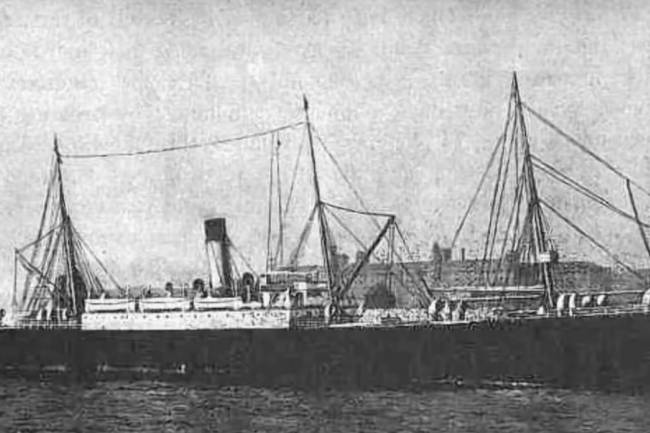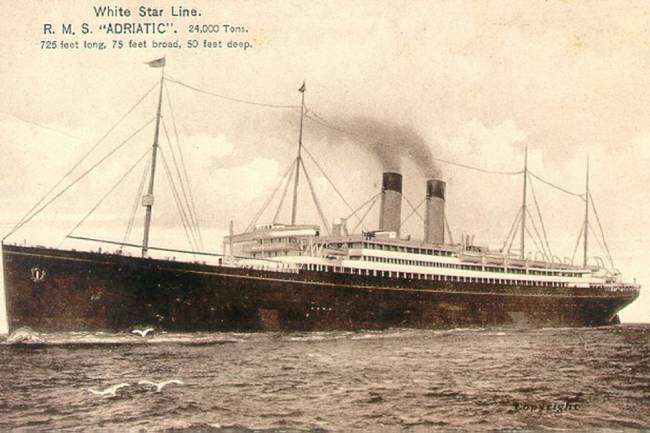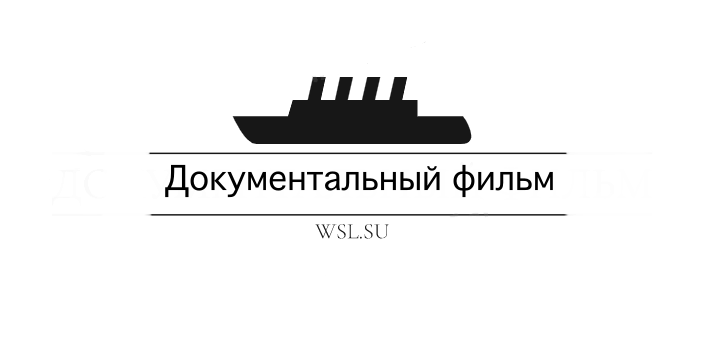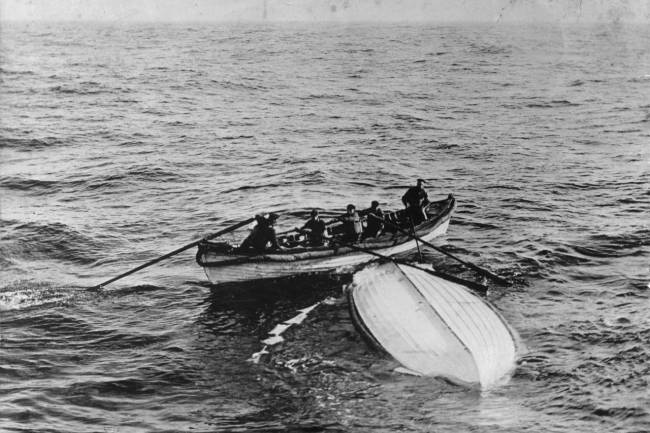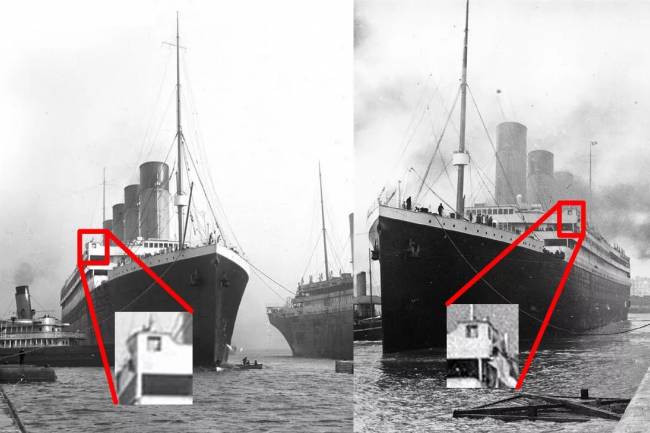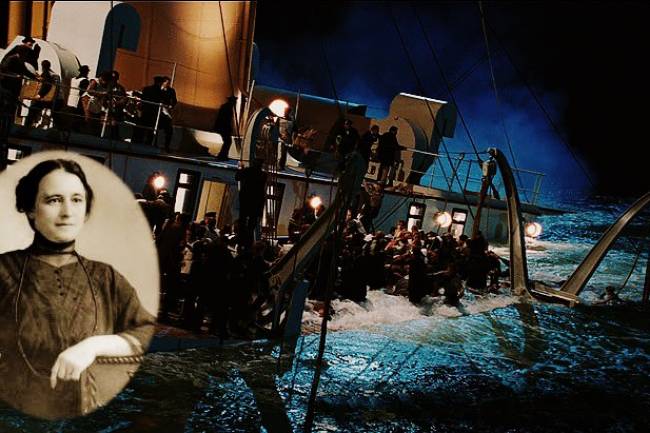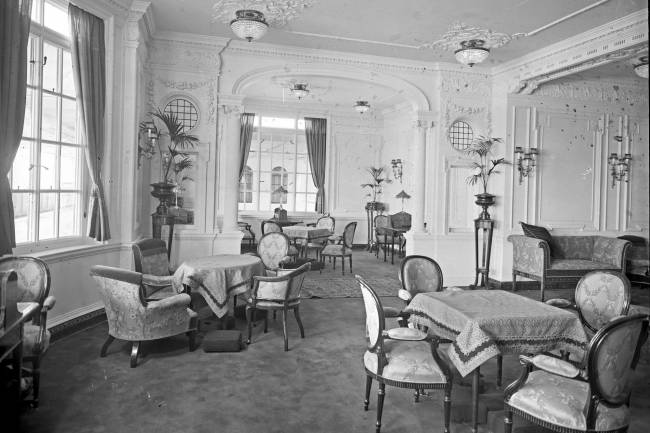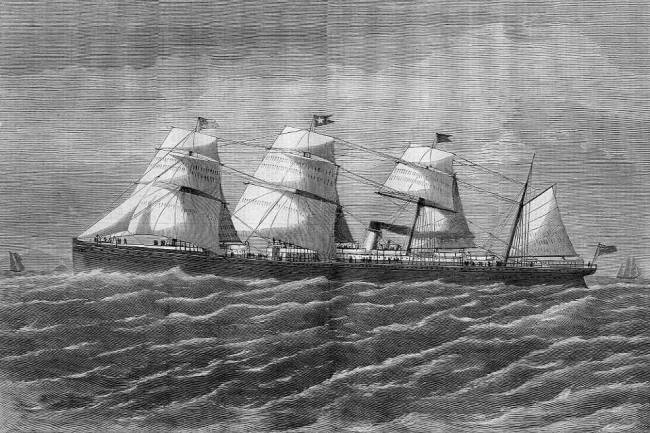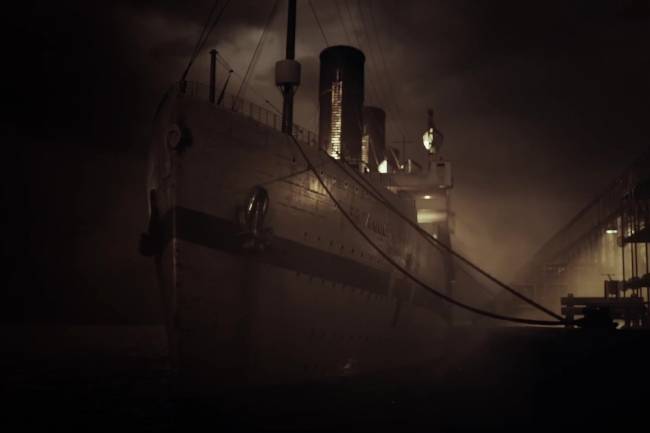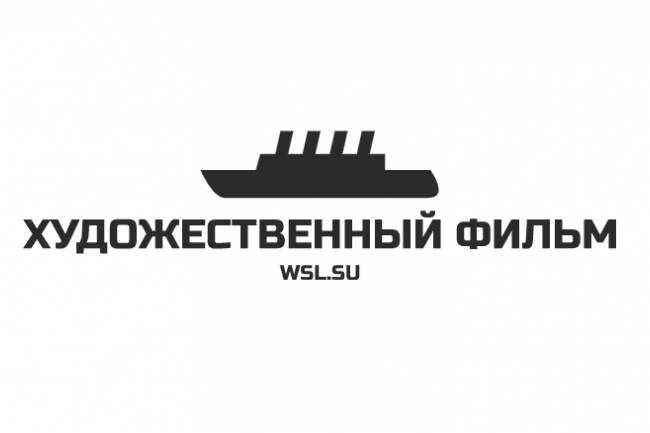
SS Suevic (eng)
Statistics
Gross Tonnage - 12,482 tons
Dimensions - 172.21 x 19.3m (565 x 63.3ft)
Number of funnels - 1
Number of masts - 4
Construction - Steel
Propulsion - Twin screw
Engines - Two four-cylindered quadruple expansion engines Service speed - 13.5 knots
Builder - Harland & Wolff, Belfast
Launch date - 8 December 1900
Passenger accommodation - 400 'one' class
Details of Career
The Suevic was one of a pair of ships launched for White Star in 1900; they were basically the same as the Afric except with a longer poop. Its sister the Runic was launched in October and the
Suevic on 8 December. The Suevic made its maiden voyage to Australia on 23 March 1901 generally carrying troops to the Cape and, on some voyages, Australian contingents to South Africa on the inbound leg. On 17 March 1907 the ship was inbound with 382 passengers for Plymouth when it became stranded on Stag Rock, Manacles near the Lizard. Due to a miscalculation of the landfall the ship overshot by nearly 16 miles and went ashore at full speed. The passengers were taken off the ship in the lifeboats.
On 20 March, in an effort to lighten the impaled bow, the unloading of the forward cargo bays began. On 27 March the weather worsened and the ship went further on to the ledge. Ranger, of the Liverpool & Glasgow Salvage Association, was now in attendance. As the stern portion was intact the decision was taken to save the ship by severing it. Dynamite was placed in position non- stop over a 24 hour period by a diver named Fabian. As a result the fore part was cut away at the bulkhead just aft of the bridge. On 4 April the remainder was made seaworthy. Using its own engines and assisted by tugs the Suevic steamed to Trafalgar Dock, Southampton.
A new fore part to the ship was constructed at Belfast and towed to Southampton, where it was joined up. At the time this was the largest rebuilding operation ever undertaken. White Star's hull insurance meant that it was cheaper to rebuild than to scrap and debit the fund with the loss. The ship was out of service for a total of 18 months and resumed service on 14 January 1908. The ship was still in service in 1914 due to its frozen meat capacity and the fact that the passenger accommodation could be used for trooping. In March 1915 it made one trooping voyage to Mudros during the Dardanelles campaign. During the 1917-19 period it operated under the Liner Requisition Scheme.
After being released from Government service, in January 1920, the Suevic continued to serve the Australian route with a capacity for 266 2nd class passengers. The arrival in Southampton, on 14 March 1924, marked the ship's 50th voyage on the Australian route. In October 1928 it was sold to Yngar Hvistendahl's Finnvahl A/S, Tonsberg for £35,000. It was then converted at Krupp's Germaniawerft, Kiel, into a whale factory ship and a stern ramp was added. After this it was renamed Skytteren. The ship now could hold 80,000 barrels of whale oil.
After the German invasion of Norway, in April 1940, it was interned at Gothenberg, along with several other Norwegian ships. On 1 April 1942 'Operation Performance' was a planned dash of the 15 ships which were to be met and protected by the Allies as soon as they reached the open sea. It was a total disaster. Correctly the ships were not permitted to sail in Swedish territorial waters and were shown out by Swedish warships to where the alerted Germans waited. Only two ships made it, Skyterren was forced to scuttle itself off Maseskjaer, Sweden. Six of the ships were sunk by enemy action, three returned to Gothenberg where they were arrested and two whale catchers were captured in Swedish waters by German armed trawlers, the crews being taken prisoner and permitted to leave by the Swedish cruiser Gota Lejon.

The Germans protested but were told that the Navy's behaviour had predominantly favoured the interests of Germany. The ships, however, had been armed in Gothenberg with anti-aircraft guns - a clear breach of international law. Surrounded as they were by the then triumphant Germany, it was the best Sweden could do to balance up what they considered to be a crazy idea.

